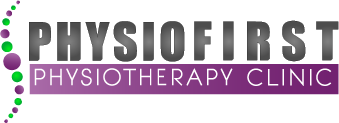Frequently Asked Question
if you have extended health benefits, have been injured as a result of an automobile accident, or have a claim under WSBC (previously WCB), then you will likely have all of your treatment paid for. If you are using extended health benefits, check the details of your coverage in your Extended Health Manual, or speak with your Human Resources department.
MSP coverage for physiotherapy services (government-funded physiotherapy) is available to families which are on premium assistance.
Seniors and children (up till grade 12) get discounted rate if they are paying private fees.
New physiotherapy patients have about 45 Minutes initial session and follow up treatments are 30-minutes. All appointment times are one-on-one with your physiotherapist.
The number of sessions you'll need depends on your condition. The initial visit gives your therapist the information they need to assess your treatment course. Your therapist will discuss this with you after your initial assessment
At your initial visit, your physiotherapist will conduct an interview and a physical evaluation. This will be followed by your first treatment so you can immediately benefit from your experience at our facility.
Treatment itself can vary depending on the type of injury that you are presenting with. This may involve education on your injury and how to optimize recovery, manual therapy (hands on treatment), physical modalities (e.g. ultrasound treatment, laser treatment, mechanical traction, electrical muscle stimulation), and an exercise program.
We ask our patients to wear clothing appropriate to the type and area of injury. Shorts and a t-shirt or tank top is usually sufficient.
Please bring any medical documentation you feel may be helpful in your treatment planning to your appointments.
If your condition is related to a work injury or an auto accident, we require your case manager's name and contact information, your claim number, and extended health benefits information.
Dizziness and vertigo are among the most common reasons why people see their doctors. Often medication is prescribed that may or may not help, MRIs or CT scans are negative, or patients are sent to specialists only to be told that nothing can be done. Many of these problems come from dysfunction of the vestibular organ, which is a small structure in your inner ear that helps with balance, coordination, and positioning. When the vestibular organ is impaired, patients experience spinning, dizziness, nausea, imbalance, and light-headedness, among other symptoms.
Generally, most patients only require 1-3 treatments to correct vestibular disorders. Treatment sessions typically involve manual hands-on treatment, an exercise program, or a combination of both. Please don't try treatment on your own if you have not been properly diagnosed, as this may actually make your condition worse.
if you still have any question or queries please feel free to book a 10 min free consultation.or give us a call (604) 503-4880


